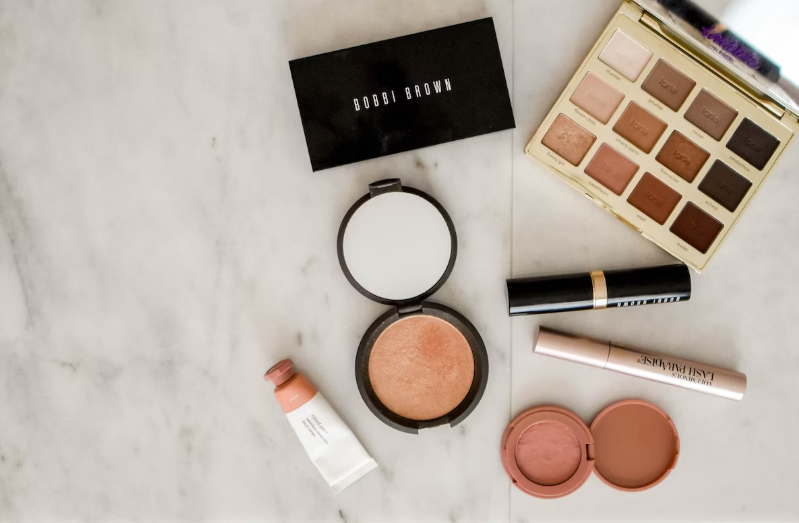
BeautyFULL CMC Pty Ltd v Hayes [2021] QDC 111

Facts
The plaintiffs include a cosmetic medical clinic, BeautyFULL CMC Pty Ltd (BeautyFULL), and its three owners, Dr Margaret, her son Mark who was the clinic director and her daughter Katie, a nurse in the clinic.
The defendant, Hayes, is an ex-employee who worked as the clinic’s receptionist for several years. She finished employment at the clinic on 16 October 2018.
In 2018, the defendant had an Instagram account with 1844 followers. The first plaintiff also conducted its own Instagram account with 19,700 followers.
After Hayes left her employment, she has had some ongoing mental health issues including periods of hospitalisation.
Hayes had commenced a relationship with Kate’s former husband in 2018, which may have been the cause of the personal animosity between the parties.
Generally, a corporation cannot be defamed. However, BeautyFULL was an ‘excluded corporation’ within the meaning of section 9(2) of the Defamation Act 2005 (Qld), which allowed it to sue for defamation.
Publication 1
BeautyFULL posted a story to their Instagram account showing the plaintiff, Dr. Margaret. The story included the caption, ‘Dr. Margaret serving during COVID-19.’
Hayes responded by reposting the story to her own Instagram. She blacked out Dr. Margaret’s face and the word, ‘Margaret’ was crossed out yet still legible. The following text was included in Hayes’ stories:
‘Before you watch my story I am not naming and shaming but when I see a company upload a FAKE photo that a medical practitioner is going to work on the frontline during the Covid-19 crisis, it’s disgusting and disrespectful to the people who are actually putting their lives at risk to save others.’
‘The same uniform was given to one of the staffs mother to wear and fake it that she’s working on the frontline. How do I know this?’
‘Because I used to work there and I ordered the uniforms off www.springspawear.com’
‘I would love to thank the REAL hero’s that are working day and night to save lives.’
‘CORONAVIRUS (COVID-19) it’s such a serious situation that I don’t understand why a company would lie about it.’
Hayes also wrote several abusive messages and comments on the business’ Facebook and Instagram accounts, which were eventually deleted by BeautyFULL.
Mark gave evidence that he was contacted by numerous people indicating that they had made a connection between Hayes’ stories and the business.
The plaintiffs argued that Hayes was defaming their business because the stories implicated that:
- The business had created a fabricated representation that Dr Margaret was involved on the frontline during the COVID-19 pandemic;
- The business had fabricated a photograph to be uploaded on the business’ social media for the purposes of promoting the business;
- The business intentionally made false claims that its employees or associates had falsely stated that Dr. Margaret, a medical practitioner, was leading the efforts in managing the COVID-19 crisis, even though she was not involved in such a role;
- The business dishonestly exploited the existence of the COVID-19 crisis to create a deliberately false impression about its actions and operations, aiming to gain commercial benefits or generate publicity;
- during the COVID-19 crisis, it engaged in conduct which was disgusting and disrespectful to the people who were actually putting their lives at risk to save others; and
- Dr. Margaret acted unethically as a medical practitioner by allowing herself to be featured in a promotion that showcased false information about her professional activities, despite knowing that it was not true.
Hayes claimed that the stories were not about the business and Dr. Margaret, although she did not provide any evidence for who it was actually referring to nor why it was posted. She also claimed that the information communicated in the stories were true, using the defence of justification.
Publication 2
Hayes visited the house of Kate’s ex-boyfriend. She berated and swore at him and was eventually removed from the premises without the use of real force.
Hayes posted photos of her in hospital with a bruised face on her Instagram story.
The text on the stories stated: ‘If you want to know how I ended up here. I was a victim of physical assault causing bodily harm. If you would like to ask about it. I’m happy to answer.’
Later, Hayes posted a picture of herself wearing her BeautyFULL work uniform with text stating: ‘beautyfullcmc.’
This was followed by posts stating: ‘I cannot legally say names but my ex-employer of 3 yr is involved. If you would like to ask about it, I’m happy to answer. I legally cannot go into detail, but I was attacked… thank God for my amazing boyfriend.
The plaintiffs alleged that the stories were defamatory to their business because they implicated that:
- The business permitted the plaintiffs to assault the defendant;
- The business was involved with the individual who committed the assault;
- The persons who assaulted the defended did so with consent of the business; and
- The plaintiffs had unlawfully assaulted or been involved in the assault of the defendant.
Hayes argued that:
- She had not identified the plaintiffs in her stories;
- The plaintiffs were not identifiable from her stories;
- The posts did not give rise to the alleged implications; and
- The stories were true, given that the ex-boyfriend of Katie was associated with her injuries.
Publication 3 & Publication 4
The third and fourth publication involves a telephone call and Facebook messages between the plaintiffs and Hayes.
The plaintiffs claimed that the exchanged communication implicated that they:
- Hacked into the defendant’s social media accounts;
- Set up the defendant to be bashed;
- Caused injury which led to the defendant’s admission to hospital; and
- Caused the defendant to be admitted to the hospital for psychiatric issues.
Issues
- Whether the defendant’s publications were defamatory to the plaintiffs; and
- Whether truth could be used as a defence.
Decision
His Honour stated that the former employee was motivated by ‘unexplained anger and resentment’ towards the clinic and the posts were ‘intentionally false’ with no basis.
His Honour accepted that the clinic had suffered loss of business reputation as a result of the defamation.
The defendant was ordered to pay damages to each of the plaintiffs, in the following amounts:
- To BeautyFULL – the sum of $20,660
- To Mark – the sum of $20,660
- To Kate – the sum of $12,912
- To Dr Margaret – the sum of $30,990
Reasoning
The publication of the post concerning the fourth plaintiff’s work during COVID-19 and of the alleged assault upon the defendant were clearly designed to cause hurt and distress.
A feature of Instagram is that it is often ‘infected by personal grievances aired in an obnoxious manner and are often not a reliable source of information.’
A reasonable reader is unlikely to have given the defendant’s stories on her personal Instagram account much credit because of the manner she expressed herself on a social media platform.
Publication 1 was posted with the intention to name and shame the plaintiffs. The ordinary person with knowledge of Dr. Margaret and her clinic would have concluded that the posts were referring to her and the business.
The defendant’s claims that the posts were not referring to the plaintiffs were ‘absurd’ given that the text ‘Dr. Margaret’ was legible and the photographs clearly depicted Dr. Margaret.
The posts were untrue because Dr Margaret was a licensed medical practitioner who actively offered medical services at a clinic. At the time of the Instagram post, she worked as a General Practitioner (GP) at a different medical clinic, where she referred patients for COVID-19 testing. Additionally, Dr. Margaret had a public association with BeautyFULL’s business.
The posts were defamatory to the plaintiffs because the allegations would lower their reputation of ordinary reasonable members of society.
The Second Publication was deemed defamatory towards the plaintiffs as a whole.
The post mentioned “my ex-employer” and included a photo of the defendant wearing the business’ uniform.
The Court concluded that the second publication was referrable to the plaintiffs based on its content.
The plaintiffs provided evidence of receiving comments from employees of the business regarding the second publication.
The ex-boyfriend’s action of removing the defendant from his house did not suggest any involvement of the Plaintiffs, according to the Court.
Video evidence of the incident at the ex-boyfriend’s house contradicted the defendant’s claim of being assaulted as she described.
The Court rejected the defendant’s truth defence, stating that it was a reflection of her self-justification for her outrageous conduct captured in the video and her animosity towards the Plaintiffs throughout the case.
Abusive communications through phone calls and Facebook further suggested the connection of the second publication to the plaintiffs.
Need Defamation Help?
Please get in touch with us today via phone or the contact form on this page.



